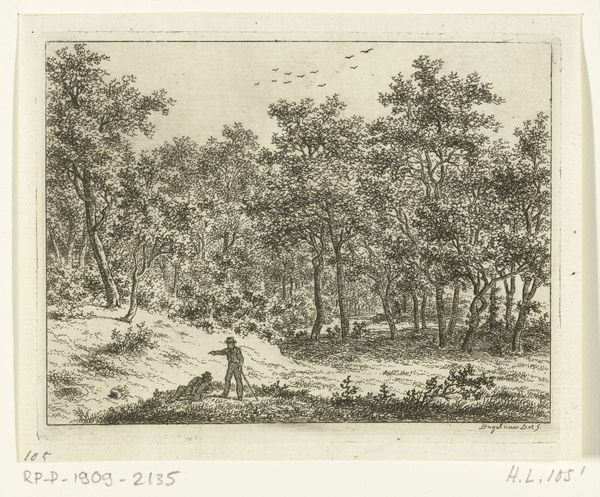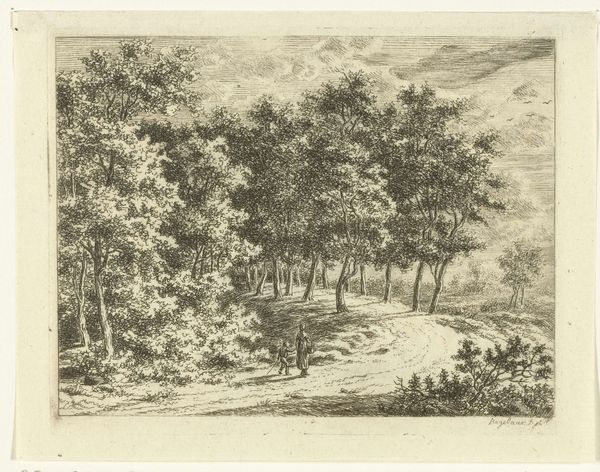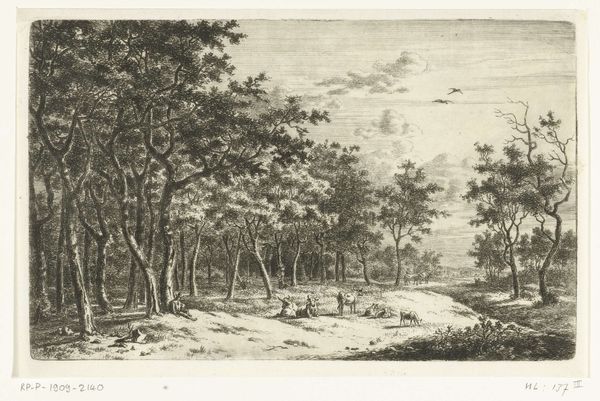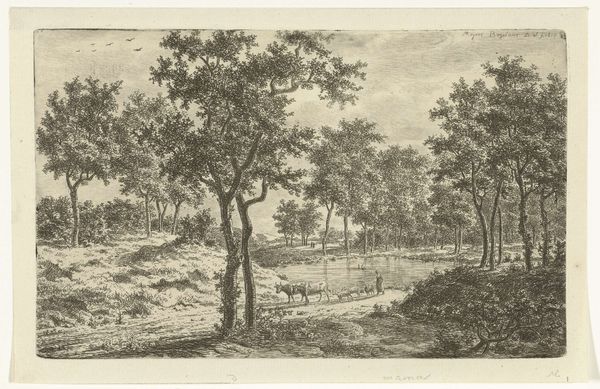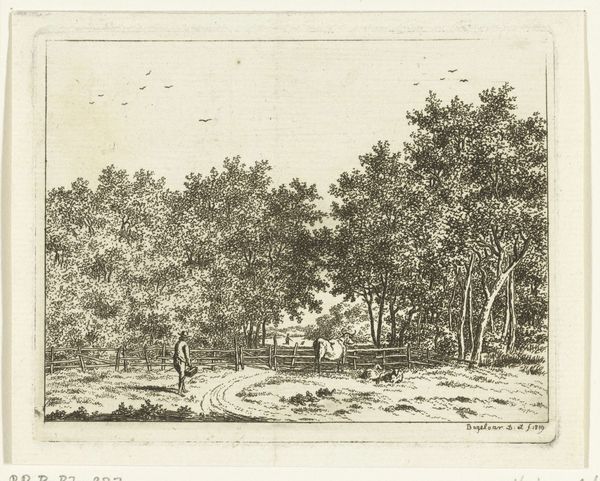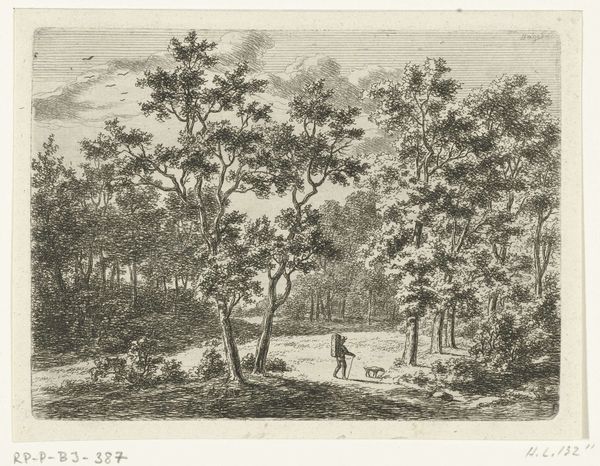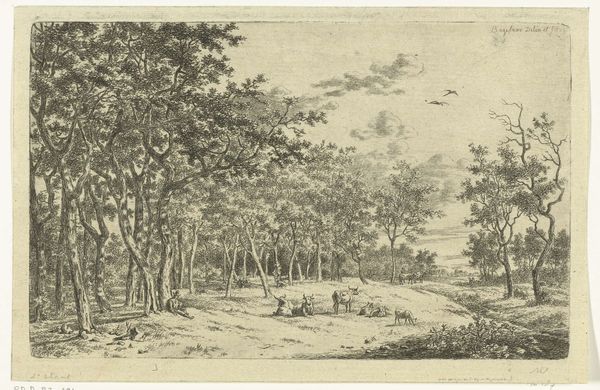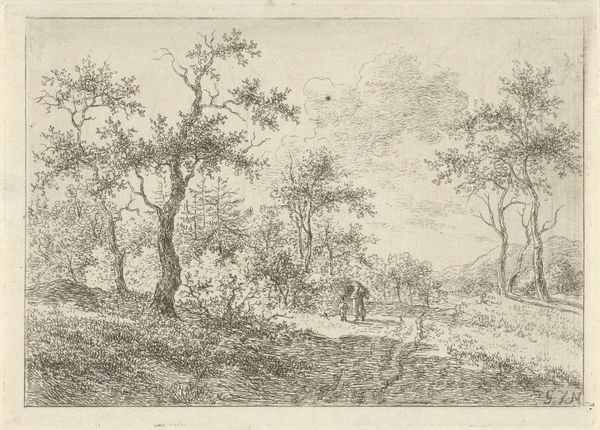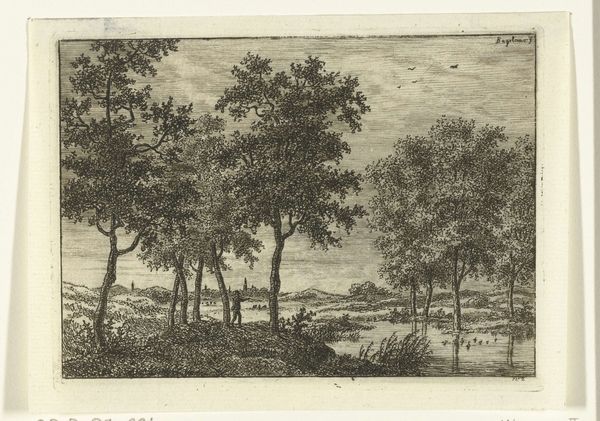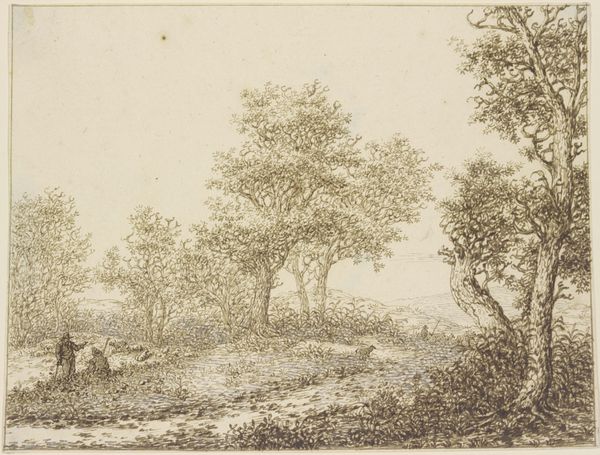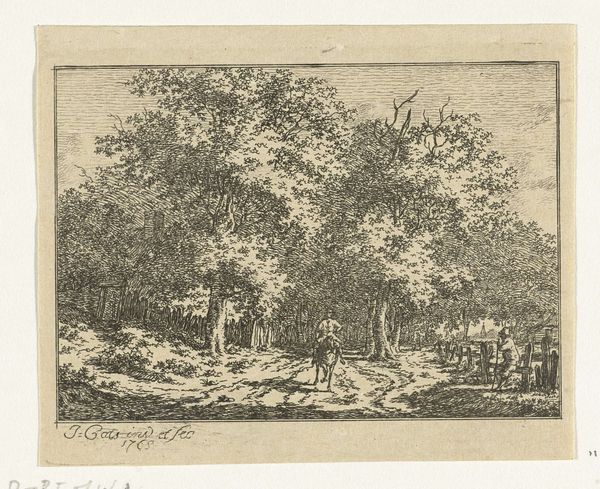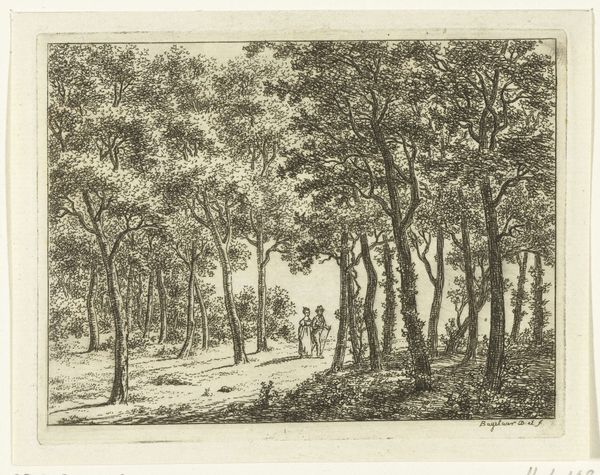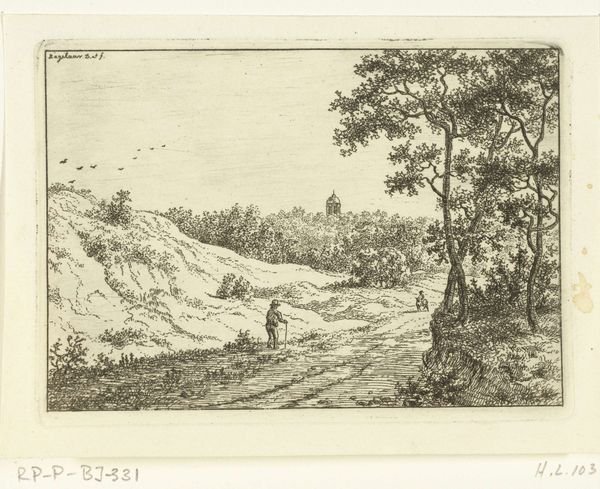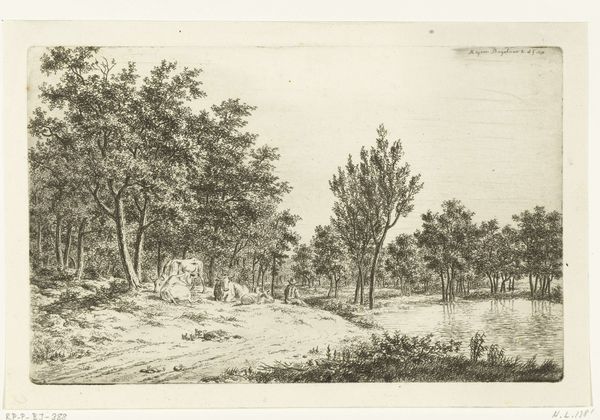
drawing, etching
#
drawing
#
pen sketch
#
etching
#
pencil sketch
#
landscape
#
etching
#
romanticism
#
line
#
genre-painting
Dimensions: height 95 mm, width 120 mm
Copyright: Rijks Museum: Open Domain
Ernst Willem Jan Bagelaar created this print of a landscape with a woman and child in the Netherlands, sometime in the late 18th or early 19th century. It presents us with a tranquil scene: a woman and child walking along a path fringed by trees, with birds overhead. But we can ask, what does this image tell us about the social role of art in the Netherlands at this time? The print medium itself is key. Prints allowed for the wider distribution of images. And landscape as a subject was on the rise, reflecting a growing interest in the natural world and a sense of national identity tied to the Dutch landscape. This print, with its carefully rendered details, speaks to the values of observation and appreciation of nature fostered by institutions like the Haarlemse Teekenacademie, where Bagelaar taught. To fully understand the image, we would want to know more about the artistic conventions of the time, the market for prints, and the social class of the intended audience. Art history is about understanding art in its full social and institutional context.
Comments
No comments
Be the first to comment and join the conversation on the ultimate creative platform.
